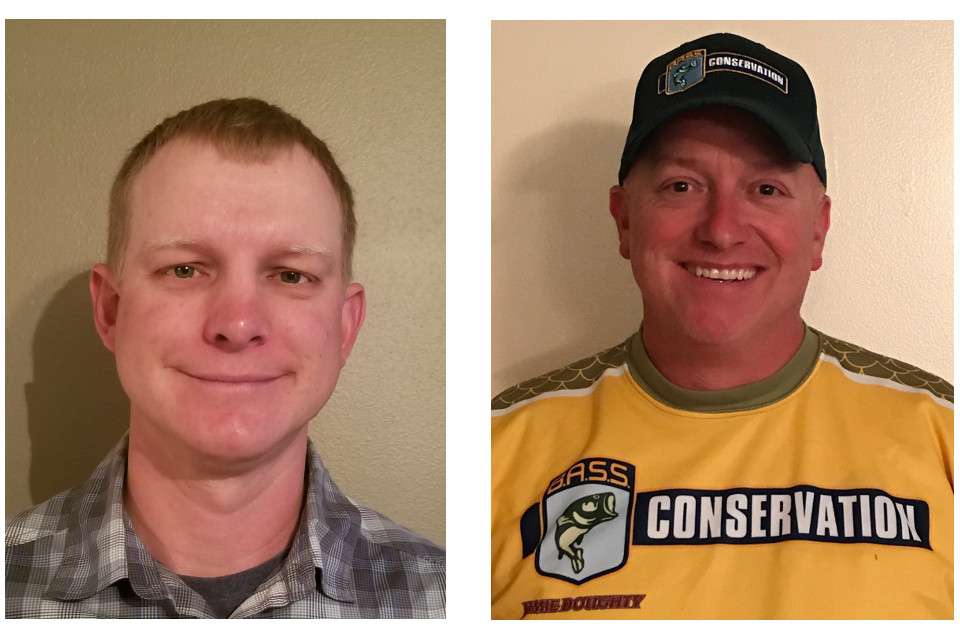
NASHUA, N.H. – Along the northern tier of states, smallmouth often take top billing for anglers. Consequently, they’re also often at the forefront of concerns for B.A.S.S. Nation (BN) state conservation directors Jamie Doughty of New Hampshire and Brad Tribby of Wyoming.
“We accomplished a big habitat improvement project using Mossback structures on Flaming Gorge Reservoir,” said Tribby, who has been CD of Wyoming BN/Cowboy Bass for two years. “The project was paramount to recover bass in one of the nation’s best smallmouth fisheries.”
The Gorge needed assistance because of illegal introduction of predatory burbot, which decimated the smallmouth bass population in Wyoming’s portion of the reservoir, as well as damaged kokanee and lake trout populations. In addition to helping add habitat, B.A.S.S. anglers also assisted with catching bass in the unaffected Utah section and transplanting them in Wyoming.
In New Hampshire, meanwhile, Doughty said that one of the highlights of his seven-year tenure as conservation director has been “working with New Hampshire Fish and Game in conducting a bass study to track the migration of tournament caught bass between two interconnected bodies of water, Big Squam and Little Squam Lakes, which habitually land on the list of best bass fishing lakes.”
Learning about movement of both smallmouth and largemouth bass between the two is important because no weigh-in locations for larger tournaments are available at the larger lake, so fish must be transported to the smaller.
“If most of these bass do not return to Big Squam, it could lead to increased competition for food and habitat, and potentially increased opportunities for bacterial or viral transmissions, such as Largemouth Bass Virus,” said Gabe Gries, Warmwater Fisheries Project Leader for New Hampshire Fish and Game. “Additionally, bass must use energy to find appropriate habitat in their new area and extra usage of energy reserves may increase the probability of over-winter mortality.”
During the first part of the study, biologists have learned that 61 percent of smallmouth and 60 percent of largemouth returned, although a few of the smallmouth took nearly a year to do so.
Both Doughty and Tribby represent the BN well in their states, according to B.A.S.S. National Conservation Director Gene Gilliland.
“Jamie has a good relationship with his state fish management agency and has been instrumental in helping coordinate research that documents the effects of bass tournaments on bass populations,” Gilliland said.”Perhaps his biggest challenges though are not in working with the state biologists but from the growing threat of lake associations and property owners trying to privatize public water by buying up possible access sites or using invasive species rules to justify restricting anglers and tournaments.”
A member of the Last Cast Bass Club and father of two, Doughty has been a B.A.S.S. member for 16 years and was treasurer of the state BN for seven.
Tribby, meanwhile, owns the unique distinction of having been a CD in two states. A fisheries biologist for the Bureau of Land Management, he served for three years in Montana before moving to Wyoming. He’s been a B.A.S.S. member for 22 years.
“Brad is one of only a few of our conservation directors who have a background in natural resource management,” Gilliland said.
“His training and job as a fishery biologist give him a different perspective on issues when dealing with state or federal fishery managers. His position with a federal agency also makes him a valuable asset to the Reservoir Fisheries Habitat Partnership, a partner of B.A.S.S. Conservation in restoring and enhancing fish habitat in aging reservoirs.”





